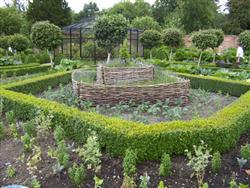
Benefits of this course for successful garden restoration
This course is concerned with the history, design and restoration of ornamental gardens.
-
It assumes a foundation knowledge of landscape and horticultural management.
-
It is a valuable study program for even those who have worked in landscaping for some time, but who seek a deeper and broader knowledge of garden renovation.
-
This course has been developed by professionals in both Australia and the UK, with the aim of being relevant throughout the world.
CONTENTS
There are 8 lessons in this module as follows:
-
Landscape History & Design Styles
-
Surveying the Site
-
Assessment of Plantings and Features
-
Selecting Components for Retention
-
Work Programming and Risk Management
-
Drainage
-
Hard Landscape Feature Restoration
-
Planting Restoration and Maintenance
Aims
-
Outline the history of UK garden design and the influence of plant introductions.
-
Evaluate an established ornamental garden in order to determine any particular design style period, or plants of interest.
-
Describe basic methods for the survey and recording of the layout and content of an established garden, and explain the importance of detailed information including assessment of site factors.
-
Explain processes and the need for assessment and recording of the type, condition and future potential of a range of plantings and features in an ornamental garden.
-
Explain the main criteria used to select plantings and features for retention in a restored garden.
-
Explain the need and processes of analysis of collected information.
-
Prepare a summarised programme for organisation of garden restoration work
-
Assess risk and identify safe work practices
-
Recognise and explain the visible signs of the failure of old land drainage systems and describe remedial measures
-
Describe and explain the practical procedures necessary for the restoration of a range of hard landscape features.
-
Explain problems which may be encountered in the improvement of retained hedges, plantings and lawns.
- Describe practical solutions for improving retained hedges, plantings and lawns
- Evaluate the use of modern maintenance techniques in established gardens
Replanting an Old Garden
Adding life to an old garden can often be achieved easiest by simply replacing some of the plants.
In a historic garden; there may be a desire to be as true as possible to the original garden plan. If that is the case; your choice of what to plant back, may be predetermined.
There are however, good reasons to choose a different plant; if it is feasible to do so.
- When you replant the same species into soil that contained a sick or dying plant; that soil may still contain disease organisms (or spores) that are a particular problem for that particular species.
- When you allow yourself the freedom to choose some different species; you have the possibility of using a cultivar that is better in every way, than the previous plant.
Revitalizing the Garden
Do you want to revitalise it and give it a stunning new appearance?
Stand back and take a fresh look at your garden. Imagine seeing it for the first time:
- What catches your eye?
- What parts of the garden lack interest?
- Are there any bare areas in the garden beds?
- Could the lawn be enhanced by adding a tree?
- Do any of the plants have small or insignificant flowers?
- Are there plants in your garden that are dead or diseased?
- Do you have plants that are repeatedly damaged by birds or insects?
- Have shrubs become overgrown or “leggy”?
- Have the trees grown too big for the scale of the garden?
Once you have done this, try to imagine what it would look like if you were to drop a patch of different foliage or flowers into a section of the garden. Let your imagination run riot. Don’t just think of the plants you know, also think in terms of the colours and shapes that you would like to see in your garden.
BE RUTHLESS
If you are unhappy with how parts of your garden look, the best way to improve them is to start from scratch. So be radical! Clear an area where you can create the garden you really want.
Add Contrasting Affects
The easiest way to inject new life is to add some contrast:
- If your garden has lots of subdued colours, adding patches of a different colour or texture will make a big difference.
- If the plants are all low to medium shrubs, add a tall tree with a trunk that stands out such as a white-trunked Eucalypt, Crepe Myrtle or a Silver Birch.
- If much of the garden has small or medium-sized foliage, add something with huge leaves such as an Acanthus, Gunnera, Monstera or Philodendron.
- If the foliage is mostly green, add plants with variegated or silvery/grey leaves.
- If the foliage shapes are rounded, add a tall bamboo; pencil pines or other tall, narrow plants.
What This Course Could Do For You
This course is likely to be of value to people who have an interest in garden restoration or conservation. It will also appeal to anyone with a general interest in garden history and design.
People who take this course are most likely those working in or aspiring to work in:
- Garden Restoration
- Garden Conservation
- Garden Design
- Landscaping
- Gardening
- Horticulture
- Parks & Gardens
- Botanical Gardens
- Garden Maintenance
The course will also be of value to people wishing to include garden restoration as a service within an existing gardening or landscaping business.
WHAT NEXT?
Register to Study - Go to “It’s Easy to Enrol” box at the top of the page and you can enrol now.
or
Get Advice – Email us at info@acsedu.co.uk OR
Use our FREE COUNSELLING SERVICE to contact a tutor
CLICK TO CONTACT US